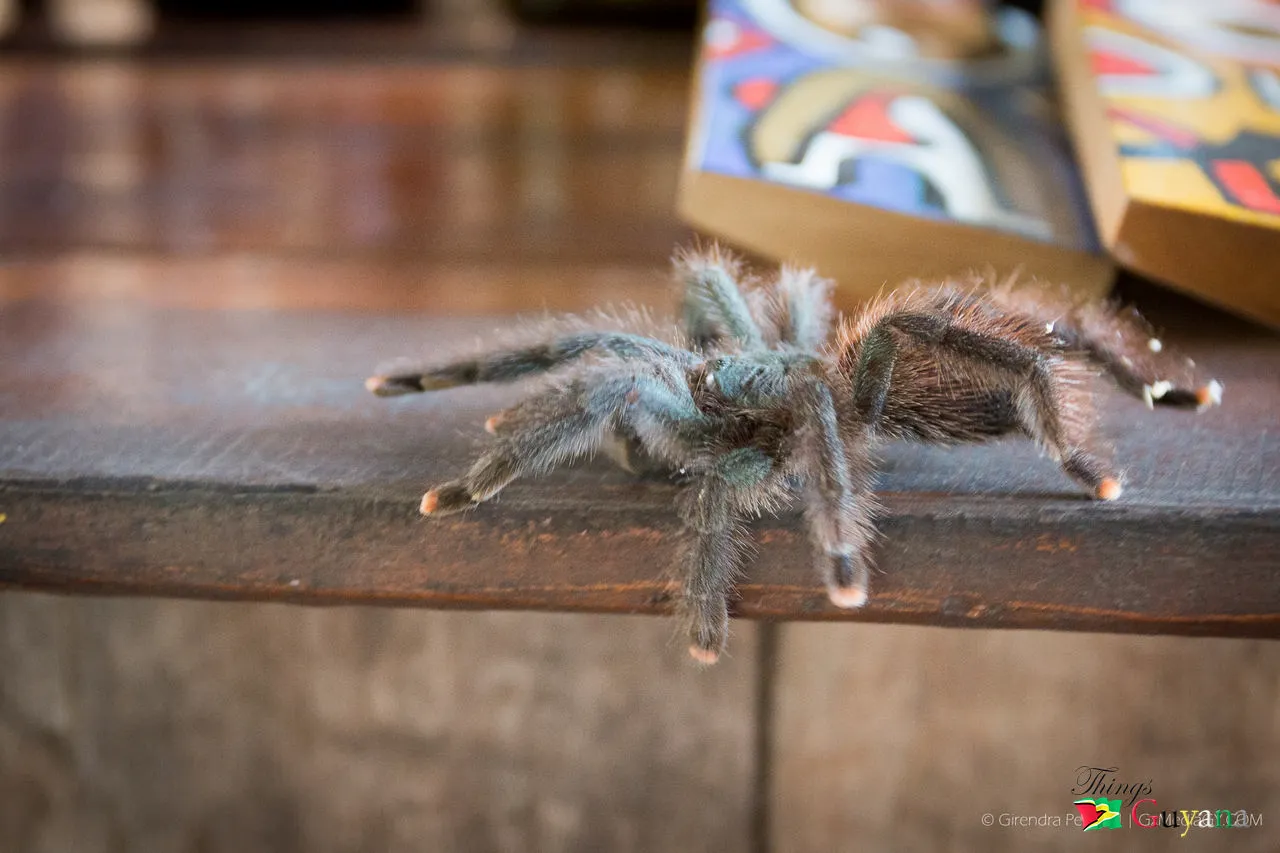Understanding the Guyana Pinktoe Tarantula (Avicularia avicularia)
The Guyana Pinktoe Tarantula, scientifically known as Avicularia avicularia, is a captivating arboreal species popular among tarantula enthusiasts. Native to the tropical rainforests of Guyana and other regions of South America, these spiders are known for their vibrant colors and relatively docile temperament. This guide will provide you with comprehensive Guyana Pinktoe Tarantula care instructions, enabling you to create a thriving and enriching environment for your pet. Understanding their natural habitat and behaviors is the first step towards ensuring their well-being. They are a beautiful addition to any collection, and with the right care, they can bring years of enjoyment.
Appearance and Characteristics
Guyana Pinktoe Tarantulas are named for the distinctive pink coloration on the tips of their feet. This feature, combined with their iridescent carapace and the overall contrasting colors, makes them visually striking. They typically have a dark-colored abdomen, often with lighter-colored hairs, and their legs can vary in shades of brown and gray. Their arboreal nature means they are well-adapted to climbing, with specialized pads on their feet to aid in gripping. This species is known for its relatively gentle disposition compared to some other tarantula species, making them a good choice for those new to tarantula ownership. Their size is also moderate, contributing to their appeal as manageable pets.
Lifespan and Size
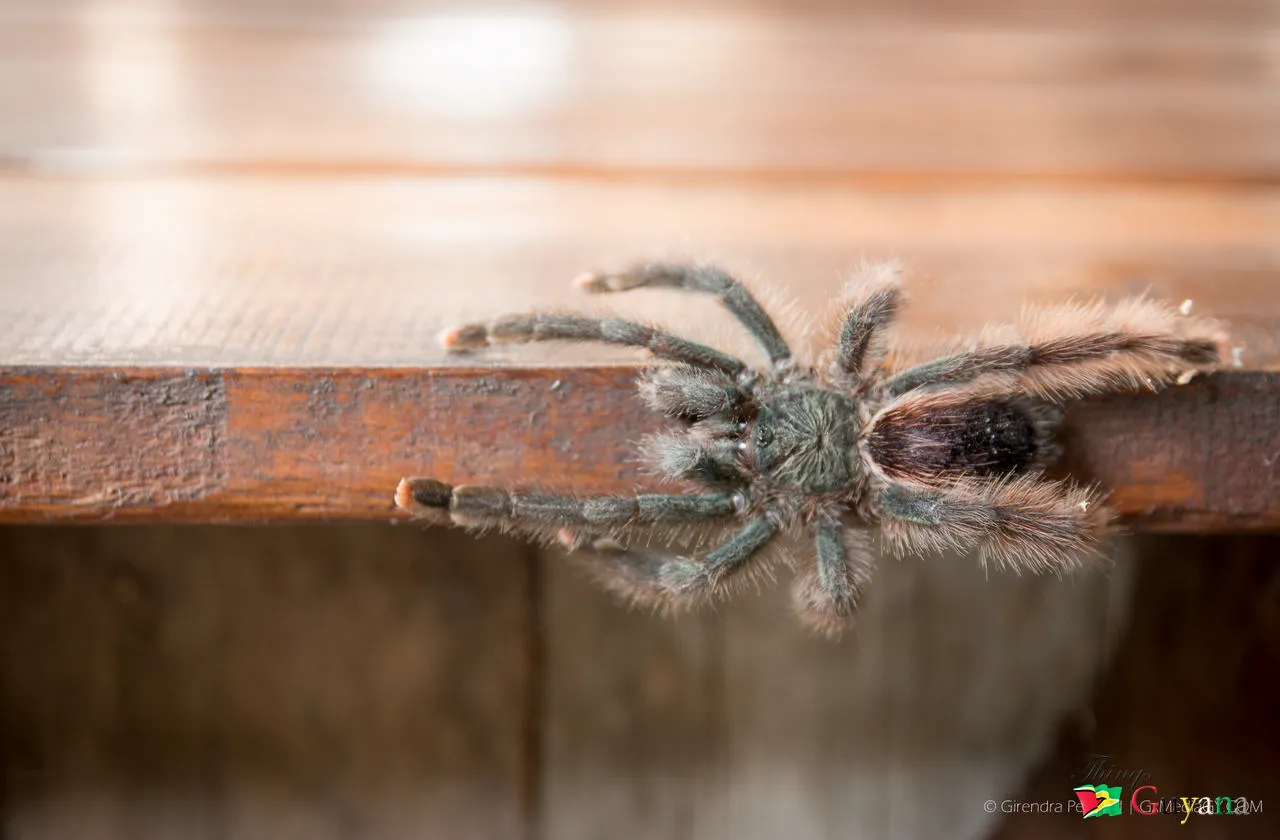
Female Guyana Pinktoe Tarantulas can live for up to 12 years or more, while males typically have a shorter lifespan of 3 to 5 years. The size of these tarantulas varies, with females generally reaching a leg span of up to 5 to 6 inches, while males are often slightly smaller. This size difference is a crucial factor in housing, as it impacts the space requirements for each individual. Healthy growth and longevity are directly related to the care provided, including proper diet, habitat conditions, and stress management. Understanding the life cycle and expected size is essential for responsible pet ownership and ensuring the well-being of your Guyana Pinktoe Tarantula.
Creating the Perfect Guyana Pinktoe Tarantula Habitat
Creating the right habitat is crucial for the health and happiness of your Guyana Pinktoe Tarantula. It should mimic their natural environment to provide the essential conditions for their survival and comfort. A well-designed enclosure ensures they feel safe and secure, reducing stress and promoting normal behaviors like feeding and molting. The key elements of a good habitat include a suitable enclosure, appropriate substrate, and precise temperature and humidity controls. Providing these conditions allows your tarantula to thrive and exhibit its natural behaviors. Furthermore, it should be easy to clean and maintain.
Choosing the Right Enclosure
Since Guyana Pinktoe Tarantulas are arboreal, a tall enclosure is necessary to allow them to climb and feel secure. The enclosure should be made of clear material like glass or acrylic for easy viewing and should have good ventilation to prevent mold and maintain air circulation. The size of the enclosure will depend on the size of your tarantula, but a general guideline is to provide a space that is at least twice the tarantula’s leg span in width and height. Secure lids are essential to prevent escapes. The enclosure should also include features that allow for natural behaviors, such as branches or cork bark for climbing. Regularly inspect the enclosure to ensure it is clean, well-ventilated, and secure.
Substrate Selection
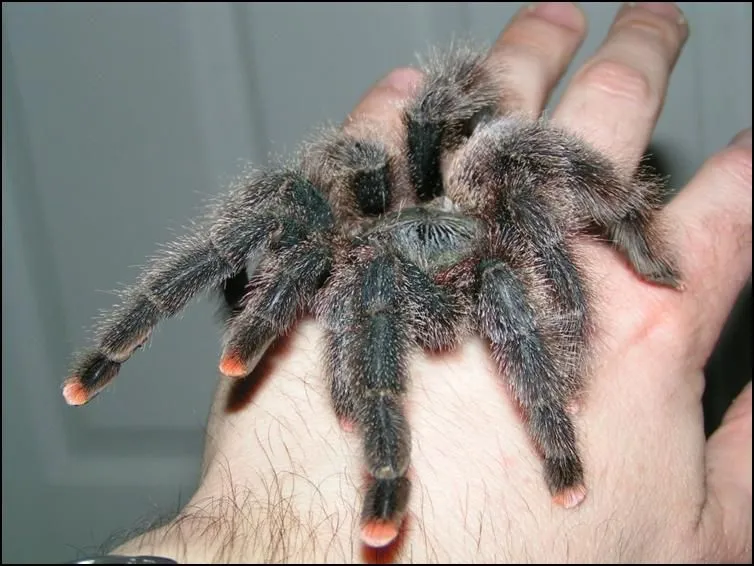
The substrate should retain moisture and allow your tarantula to burrow or hide if it chooses. A mixture of peat moss, coconut fiber, and a bit of vermiculite or sphagnum moss is often used. The substrate should be deep enough to allow the tarantula to burrow if it chooses. It also assists in maintaining humidity levels within the enclosure. Avoid substrates that are prone to mold or that can harm your tarantula. The substrate should be changed regularly, or spot-cleaned, to remove waste and prevent bacterial growth. The depth of the substrate is also a factor to consider, providing a depth appropriate for the tarantula’s size and preferences.
Temperature and Humidity Control
Guyana Pinktoe Tarantulas thrive in temperatures between 75-80°F (24-27°C). This can often be achieved with room temperature, but a heat source, such as a low-wattage heat lamp or a heat mat, may be needed in cooler environments. Humidity should be maintained at 70-80%. This can be achieved by misting the enclosure regularly with dechlorinated water and ensuring good ventilation to prevent stagnant air. A hygrometer is essential to monitor humidity levels. Proper temperature and humidity levels are vital for the tarantula’s health and molting process. The location of the enclosure, away from direct sunlight and drafts, also plays a part in maintaining the desired environment.
Essential Guyana Pinktoe Tarantula Diet and Feeding
A proper diet is essential for a healthy Guyana Pinktoe Tarantula. These spiders are insectivores, meaning they primarily eat insects. Their diet should be varied and provide the necessary nutrients for growth and development. A regular feeding schedule and a careful selection of prey will help ensure your tarantula remains healthy and active. The size and type of food will also need to be adjusted based on the tarantula’s age and size. Fresh water should always be available. Overfeeding should be avoided to prevent health issues, and uneaten food should be removed promptly. Providing a balanced diet is vital for their overall health and longevity.
Feeding Frequency and Prey Selection
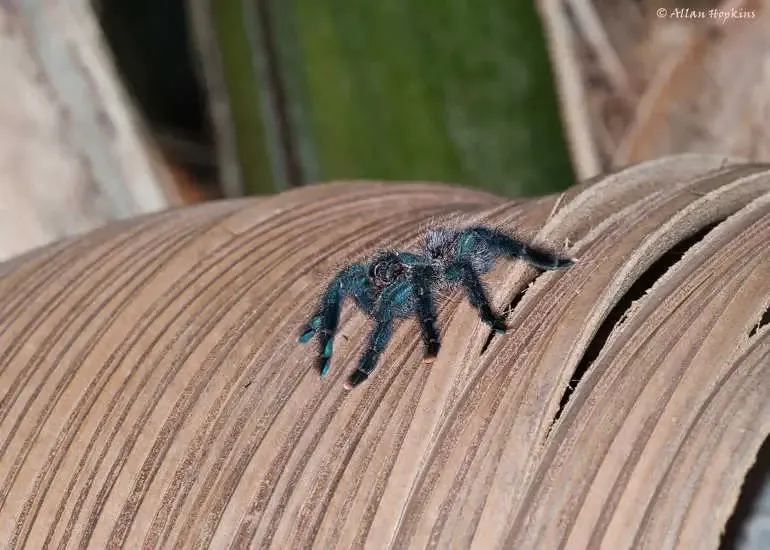
Juvenile Guyana Pinktoe Tarantulas should be fed two to three times per week, while adults can be fed once or twice a week. The frequency can also depend on the tarantula’s appetite and size. Suitable prey items include crickets, roaches, mealworms, and other commercially available insects. The prey should be roughly the size of the tarantula’s abdomen. Avoid feeding wild-caught insects, as they may carry parasites or pesticides. All prey should be gut-loaded, providing them with nutritious food 24 hours before feeding them to your tarantula. Always provide fresh, clean water in a shallow dish for your tarantula. Adjust feeding frequency as the tarantula molts.
Watering and Hydration
Clean, fresh water is essential for the survival of your Guyana Pinktoe Tarantula. A shallow water dish, filled with fresh, dechlorinated water, should always be available. Regularly check and refill the water dish to ensure it does not dry out or become contaminated. Additionally, misting the enclosure will help maintain the appropriate humidity levels, providing an additional source of hydration. The frequency of misting should be adjusted based on the humidity levels and the ventilation of the enclosure. Always use dechlorinated water to avoid harming your tarantula. Consistent hydration is key to maintaining their health and supporting the molting process.
Handling and Interaction with Your Tarantula
While Guyana Pinktoe Tarantulas are known for their relatively docile nature, handling should be approached with caution. Tarantulas can be easily stressed, and handling can lead to falls or injuries. Handling should be minimized to reduce stress, and it is generally recommended to observe your tarantula in its habitat. When handling is necessary, proper techniques and an understanding of your tarantula’s behavior are essential. It’s crucial to respect their space and understand that they are not social creatures. Observe your tarantula for any signs of stress before, during, and after any interaction. This minimizes stress and promotes the tarantula’s well-being.
Best Practices for Handling
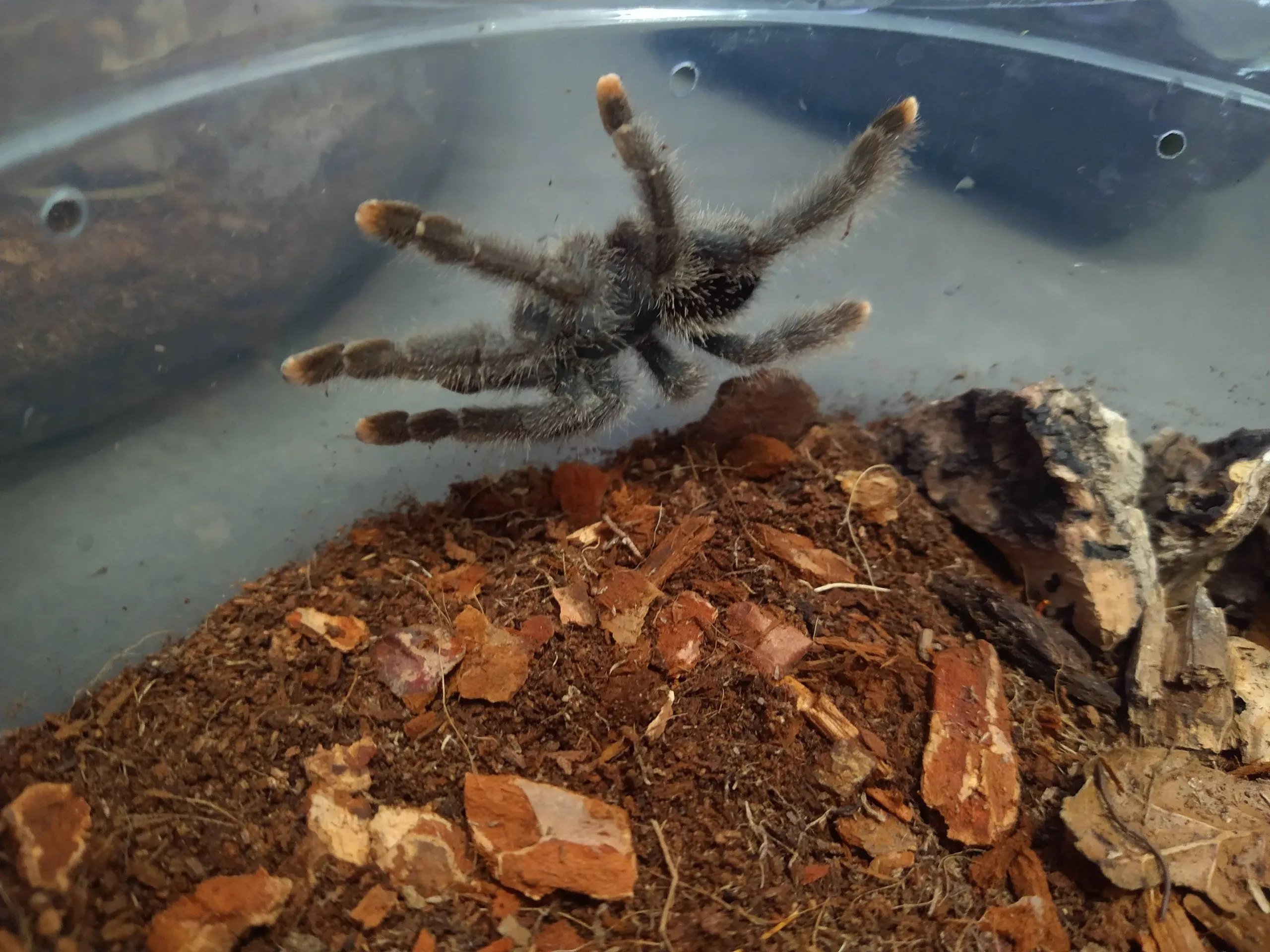
If you choose to handle your Guyana Pinktoe Tarantula, do so carefully and close to the ground. Approach the tarantula slowly and gently. Avoid sudden movements and never try to grab the tarantula. Encourage it to walk onto your hand or a soft surface. Be mindful of potential falls, as tarantulas can be easily injured if they fall from a height. Keep the tarantula in a secure location, away from children and other pets. Wash your hands thoroughly before and after handling the tarantula. Observe the tarantula for signs of stress, such as defensive postures or erratic behavior, and discontinue handling if any such signs are observed.
Recognizing and Addressing Health Issues
It is crucial to recognize potential health issues in your Guyana Pinktoe Tarantula. Early detection and prompt action can significantly improve their chances of recovery. Being aware of the common health problems, recognizing signs of illness, and knowing how to address them is a core part of tarantula care. Regular observation of your tarantula’s behavior, feeding habits, and overall appearance is essential for identifying potential issues. If you notice anything unusual, consult with an experienced tarantula keeper or a veterinarian familiar with exotic animals. Always prioritize the well-being of your pet, and seek expert advice when necessary. The health and welfare of your tarantula are paramount.
Common Health Problems
Common health problems in Guyana Pinktoe Tarantulas include mites, fungal infections, and injuries. Mites can be introduced through new substrate or prey items, and they can cause irritation and stress. Fungal infections can result from poor ventilation or high humidity. Injuries can occur from falls or handling. Signs of illness include lethargy, loss of appetite, and changes in behavior or appearance. If you suspect your tarantula is sick, isolate it from other tarantulas, improve habitat conditions, and seek veterinary care if necessary. Prevention is critical, so focus on proper husbandry and preventative measures. Monitor for signs of mites, mold, and ensure the enclosure is kept clean and hygienic to minimize risks.
Molting Process Explained
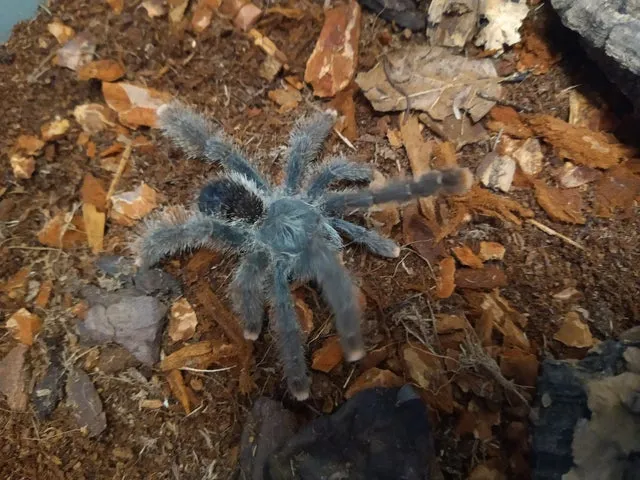
Molting is a natural process where tarantulas shed their exoskeletons to grow. It can be a vulnerable time for your Guyana Pinktoe Tarantula. During molting, the tarantula will typically stop eating, become less active, and may lie on its back. The molting process can take anywhere from a few hours to several days, and it is crucial not to disturb the tarantula during this time. Increase humidity slightly to help them molt. Avoid handling or feeding the tarantula until its new exoskeleton has hardened. Ensure the tarantula has enough space to molt without obstruction. After molting, the tarantula will appear brighter in color and will be eager to eat. After molting, the tarantula will have a new, fresh exoskeleton.
